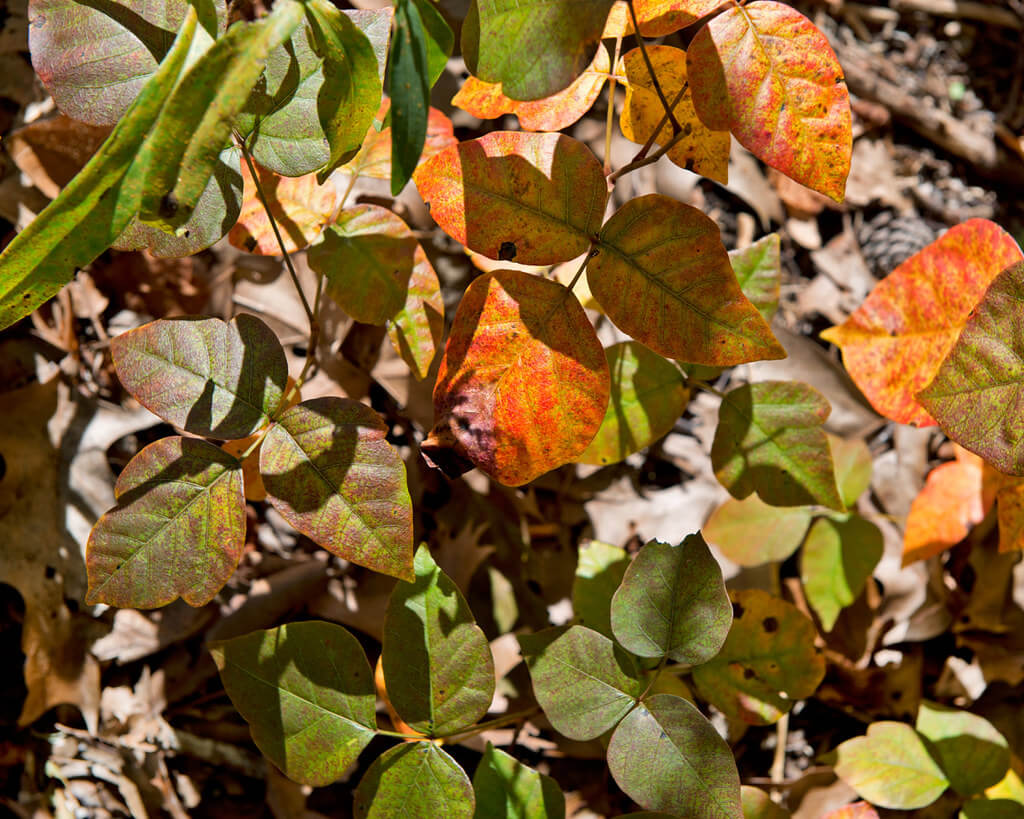What Does It Look Like?
What is it?
Poison Ivy (Toxicodendron radicans) is a a winter deciduous plant, typically occurring as woody vine to 15 metres tall or a shrub to 1.2 metre, often with aerial roots. Young shoots are densely hairy and greenish. The leaves occur alternately along the stem and consist of three (rarely five) leaflets. Leaf stalks are densely hairy, with the two lateral leaflet stalks shorter than the longer terminal leaflet stalk. The egg shaped leaflets are occasionally deeply lobed, to having course or no teeth along the margins (along its edge), and the leaf margin and surface is normally smooth, rarely hairy. The overall length of the leaf ranges from 70 to 400 mm, with individual leaflets 30–120 mm or rarely up to 300 mm. The leaves are green in spring and summer and change to yellow, orange-red or crimson in the autumn, before falling. Robust areal roots grow from stems nodes of the the vine-like stems in some plants (Parsons & Cuthbertson 2001).
Individual plants are either male or female, that is, the male and female flowers occur on separate plants.
Flowers are small 2-5 mm in diameter, yellowish green, have 5 petals, and are clustered into panicles (loosely branching flowering stalks) up to 100 mm long.
Fruits are roundish, creamy white to brown, and up to 4 mm in diameter. They contain a greyish striped seed (Parsons & Cuthbertson 2001; Tenaglia 2007).
For further information and assistance with identification of Poison Ivy contact the herbarium in your state or territory.
Flower colour
Yellow or yellow-green
Growth form (weed type/habit)
Vine or shrub
Where it currently grows? Preferred habitat
In Australia Poison Ivy (Toxicodendron radicans) grows in gardens. Around the world where Poison Ivy grows wild, it is mainly found within the temperate regions on regularly disturbed sandy or stony soils in fields, pastures, thickets, and waste places.
Are there similar species?
There are no known similar species in Australia.
























